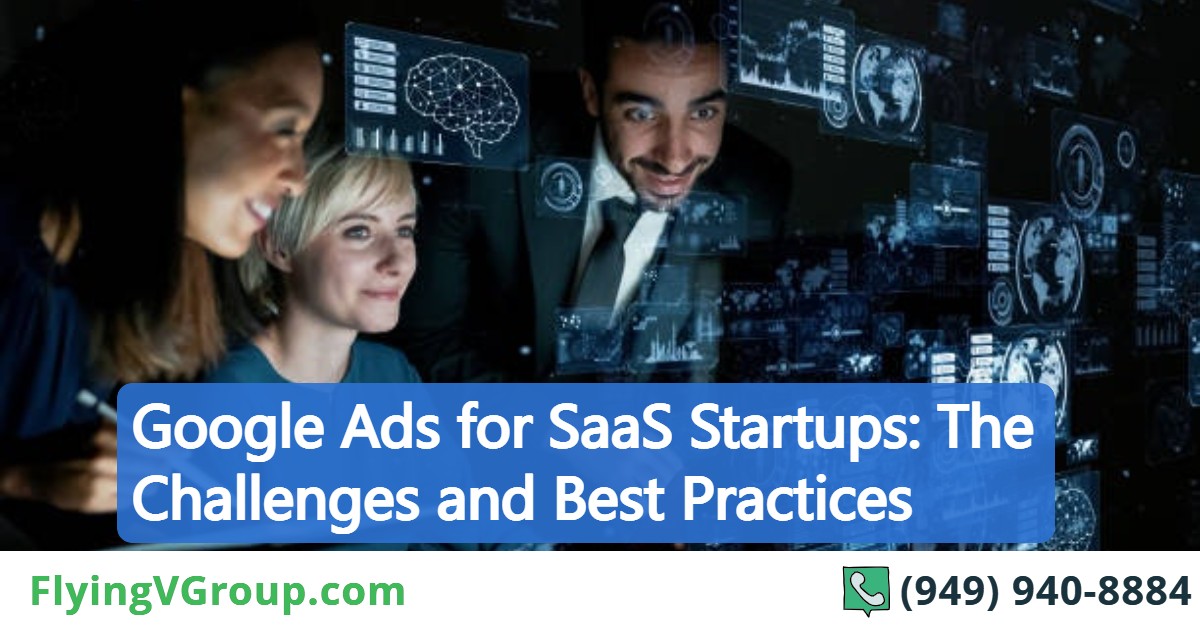Do you want to connect with SaaS prospects easily and convert as many as possible?
Google Ads offers a 200% ROI as businesses make an average of $2 for every $1 they spend on Google Ads.
(Source: Finances Online)
If you run a SaaS business, you’ve probably heard that you need to get on Google Ads, whether you’re selling directly to consumers or to other businesses.
As a SaaS startup, your business relies on attracting new customers to increase your revenue and market share. Google Ads are one of the most popular methods of doing this, as they’re easy to set up and track in real-time, allowing you to quickly make adjustments based on what’s working and what isn’t.
But how can you tell if it’s worth the money to spend thousands of dollars on Google ads?
We’ll be discussing the effectiveness of Google Ads for SaaS in boosting conversions for your brand under the following headings:
- An introduction to Google Ads for SaaS startups
- The challenges of running Google Ads for SaaS startups
- Advanced strategies to skyrocket your conversions
- How to set up a Google Ads campaign for SaaS
Let’s get rolling!
An Introduction to Google Ads for SaaS Startups
Does Google Ads work for startups? Can a startup afford to spend money on ads when it doesn’t have cash reserves, isn’t generating revenue, and is still trying to prove there’s a market for its product or service?
The answer is yes.
4 out of 5 (80%) businesses running PPC ad campaigns focus more on Google ads.
Google Ads offers an easy way to reach new users with a simple and cost-effective digital marketing for SaaS startups campaign. It is crucial for SaaS startups that are just getting off their feet, as they want to boost conversions in 2022. Since they don’t have much budget, they want to find effective ways to get in front of new customers without spending a lot of cash.
Google Ads can provide SaaS startups with precisely that. These SaaS ads help companies reach a large audience at low costs, making them appealing to SaaS startups trying to expand into new markets or break into big cities.
In addition, there are several factors about Google Ads that make them particularly well suited for B2B companies:
- The setup process is straightforward.
- They allow you to target potential customers based on their location and search history.
- You can choose your bid price per click, to determine how much money you spend per conversion.
- It only takes a few minutes to set up your first ad campaign.
- There are no minimum contract terms or cancellation fees.
Before we dive deeper, here’s a quick overview of how Google ads work.
The advertising platform allows you to place ads across search and display formats and optimize them based on performance. In addition, you can pay for these clicks using cost-per-click (CPC) or cost-per-thousand-impressions (CPM).
CPM pricing, based on an ad’s exposure, is usually cheaper but less precise. CPC pricing, meanwhile, is more expensive but lets you target specific keywords. However, to get started with CPC campaigns, you need to set a budget and define your target audience.
Once that’s done, it’s time to create some SaaS ads!
The Challenges of Running Google Ads for SaaS Startups
In a Campaign Monitor survey, startups across various industries including technology listed customer acquisition as their biggest challenge, while increasing prospects and web traffic came second and third.
(Source: Campaign Monitor)
There are many challenges associated with running digital marketing for SaaS startups campaigns. Google Ads are an excellent option for your SaaS startup when you’re looking to make your first sales, but your campaign will suffer if you ignore the challenges.
Generally, there are two types of problems SaaS startups encounter with Google Ads: It either doesn’t work, or it costs too much.
For example, some people run campaigns that have such low-quality scores that they pay more than double what they need to be paying. Or perhaps you find yourself stuck in a bidding war, and suddenly, your cost per click has doubled or tripled because other advertisers bid higher than you anticipated.
Another issue is that many people simply don’t know how to use Google Ads for SaaS correctly. As a result, many companies find that they waste their budget on clicks from non-converting traffic sources and, even worse, clicks from competitor domains.
In addition, setting up ads isn’t intuitive at all. If you want to set up ads correctly, it will take some time; it’s not something that can be done quickly. But if you have time to spare, it is definitely worth doing. Google Ads might seem intimidating at first, but when used properly, they can provide great value to your business.
How can a business owner or CMO combat these challenges?
To combat these challenges, you need to find a SaaS marketing strategy that fits your needs and provides value to your customers. You can start with these two:
#1- Avoiding Traffic that Doesn’t Convert:
You have to create highly targeted ad groups and avoid irrelevant keywords (traffic sources). By targeting relevant keywords, you will also find yourself converting higher quality leads which is what you are looking for as a SaaS startup – people who are willing to pay for your product or service.
#2- Finding a SaaS Strategy that Fits Your Needs:
There are many SaaS marketing strategies out there but not all are suitable for your particular brand.
The best way to find the best SaaS strategy for your needs is by testing different SaaS marketing strategies until you find one that works. We recommend starting with tools like SpyFu, SEMRush, or WordStream and then optimizing your campaign based on their data.
Advanced Strategies to Skyrocket Your Conversions
The market for SaaS is massive—and incredibly lucrative. Statista estimates that enterprises will spend over $672 billion in 2022 buying and implementing software.
(Source: Statista)
When you consider that those companies are just one part of a vast ecosystem of enterprise technology, it becomes clear how ample an opportunity there is to grow your business through SaaS advertising. After all, there’s plenty of money to be made in SaaS—and you should take advantage of every opportunity available to grow your business.
But what if we told you that you could increase your conversions by 20% or more by using a few advanced SaaS strategies with Google Ads?
Yes, it is possible.
Here are 11 advanced Google Ads for SaaS strategies:
1. Test and Track Results
To get more conversions from your campaigns, you’ll need to optimize them for your target audience. One of the best ways to do that is by testing out different types of ad copy, keywords, and bid amounts until you find something that works.
Once you have a SaaS marketing strategy that’s working well, it’s crucial to track your results to keep refining them over time.
2. Ad Extensions
The right ad extensions can help make sure that people interested in what you have to offer click through and visit your website or landing page. It’s essential to use them correctly, though, not just spam them everywhere.
(Source: Rothman PPC)
A few well-placed ad extensions can go a long way toward increasing your conversions, so it’s worth learning how they work and when it makes sense to use them.
3. Use Negative Keywords
Negative keywords aren’t something most new advertisers think about, but they can be handy for cutting down on wasted spending.
For example, if you add negative keywords to your campaigns, you can ensure that your SaaS ads don’t show up for searches that aren’t relevant to your business—which means more money in your pocket!
4. Utilize Cross-device Targeting
(Source: Lotame)
Many people use multiple devices throughout their day—and if you want to capture them all, then it’s essential to make sure that your advertising strategy includes cross-device targeting.
By tracking how someone interacts with a device (whether it’s a laptop or phone), you can ensure that they see your SaaS ad when they visit your website or app later on another device.
5. Create a Customer Lifetime Value (LTV) Model
(Source: CleverTap)
When you’re trying to decide whether or not it makes sense to spend money on advertising, it can be helpful to create a customer lifetime value (LTV) model.
It is an estimate of how much revenue a customer will bring over their lifetime due to using your product or service—and you can use it to help determine if an ad campaign is worth investing in.
6. Research Competition
To ensure you’re getting good ROI from your campaigns, research your competitors before launching them. Find out how much they spend per month on advertising and try to develop a SaaS advertising strategy that beats them.
7. Use Remarketing Lists for Search Ads
Remarketing lists for search ads (RLSA) can be a great way to connect with past visitors who haven’t converted yet—and if you use them correctly, they can help boost your conversions significantly.
To effectively take advantage of RLSA, though, it’s vital to understand how they work and why they can be such an effective marketing tool for Saas startups.
8. Create an Effective Landing Page
Wordstream revealed that the average landing page conversion rate across all industries is 2.35%, with top companies making up to three times this average.
If you want people to click on your SaaS ads, then you need to give them a reason. You can do this by creating a landing page that will draw them in so that converting them will become easier.
9. Use Automation Tools
There are some great automation tools like AdEspresso that can help automate much of your campaign setup and management.
10. Learn from Your Mistakes
You will inevitably make mistakes when running Google Ads for your startup. The best way to learn is by looking at what went wrong and trying not to repeat those mistakes in future campaigns.
11. Start Small
When running Google Ads for your SaaS startup, it is essential to start small. Of course, you can always scale up later if needed, but starting too big may hurt you in the long run.
How to Set Up a Google Ads Campaign for SaaS
The world of search engine marketing is complex, which is why many SaaS startups prefer to focus their resources elsewhere.
But it turns out there are plenty of cases where running a successful search engine SaaS ad campaign can help boost your startup’s growth – it all depends on your budget, goals, and (most importantly) niche.
At first glance, Google Ads might seem like an unnecessary expense for a company whose primary goal is to acquire new users via organic channels. However, if you have a well-defined target audience and know how to leverage paid SaaS ads effectively, Google Ads could be just what you need to take your business to new heights.
Here’s how to set up a Google ads campaign for SaaS:
#1 – Define your Goals
To determine whether or not you should invest in Google Ads for SaaS, you must first define what you hope to achieve with your campaign.
What are your campaign goals?
For example, are you trying to drive traffic back to your website? Do you want more leads in general? Or do you simply want more exposure to raise brand awareness?
Once you’ve decided on your goals, it will be easier to determine which keywords are worth targeting and which ones aren’t.
#2 – Determine your Budget.
There are three different types of campaigns you can run through Google Ads: cost per click (CPC), cost per impression (CPM), and cost per action (CPA). CPC campaigns require you to pay every time someone clicks on your ad; CPM campaigns charge based on impressions; CPA campaigns charge based on conversions.
Depending on your campaign budget, you may only be able to choose between CPC and CPM campaigns.
If your goal is to drive traffic back to your site, a CPC campaign would likely be best. However, if you’re looking for brand awareness, then CPM would probably work better since it allows you to reach a more significant number of people without paying as much per person.
#3 – Choose your Keywords
Now that you’ve determined your budget and chosen a type of campaign, it’s time to start thinking about what keywords you want to target. Broad keywords tend to convert better than specific ones.
For example, instead of targeting WordPress plugins, try something broader like WordPress tools. It doesn’t hurt to spend some extra time researching popular SEO terms before diving into keyword research—you never know when they might come in handy!
#4 – Create your Ad Groups
After selecting your keywords, it’s time to create your ad groups. An ad group is essentially a collection of similar keywords relevant to each other and will appear together on search results pages.
When creating your ad groups, make sure to keep things organized by separating them into topics such as WordPress Plugins and WordPress Security.
Being organized makes it easier to find items later on, and also makes your SaaS ads look more professional and appealing to potential customers.
#5 – Write a Compelling Copy
With everything else taken care of, the most important part now comes: writing compelling copy that will draw potential customers in.
To attract your target audience, you must keep your copy short and to the point, and naturally use your keywords.
Also, include a call to action (e.g., Download our free guide) so that visitors know precisely what you want them to do next.
#6 – Track your Performance
Finally, it’s time to track your performance. Google Ads has a built-in analytics tool that will allow you to monitor your campaign’s progress and see which keywords are converting best. You can even adjust your bids on a keyword-by-keyword basis to maximize profits.
Also, be sure to keep an eye on your ROI (return on investment) to know when it’s time to cut your losses and move on.
Craft a Solution-Centered Google Ads for Your SaaS Startup
While it’s true that Google Ads aren’t the only way to get more traffic to your website in general, they can be an effective part of your overall marketing strategy if you’re selling a SaaS product.
Moreover, while a SaaS advertising strategy might seem scary at first, it doesn’t have to be complicated. You can always turn to a digital marketing agency for SaaS to help you.
At Flying V Group, we are goal-oriented and will devote our time and resources to maximizing your Google Ads for SaaS advertising budget. The results of working with our digital marketing agency for SaaS are always jaw-dropping. Contact us now.
SHARE THIS POST
Thank you so much for reading Google Ads for SaaS Startups: The Challenges and Best Practices . We really appreciate it! If you have any questions about our article, or can suggest any other topics you think we should explore, feel free to let us know.
Be sure to sign-up for our newsletter to receive monthly emails on all of the latest trends and happenings in the digital marketing space. You will also receive our FREE E-Book with the Amazing Marketing Tools for Powerful Business Growth. Sign-up below!
Also, if you received some value out of this article, please share with your friends or colleagues, or leave a comment/question below. We really appreciate you reading our blog and every share/comment means the world to us and allows us to continue producing valuable tools to help you grow your business!






0 Comments